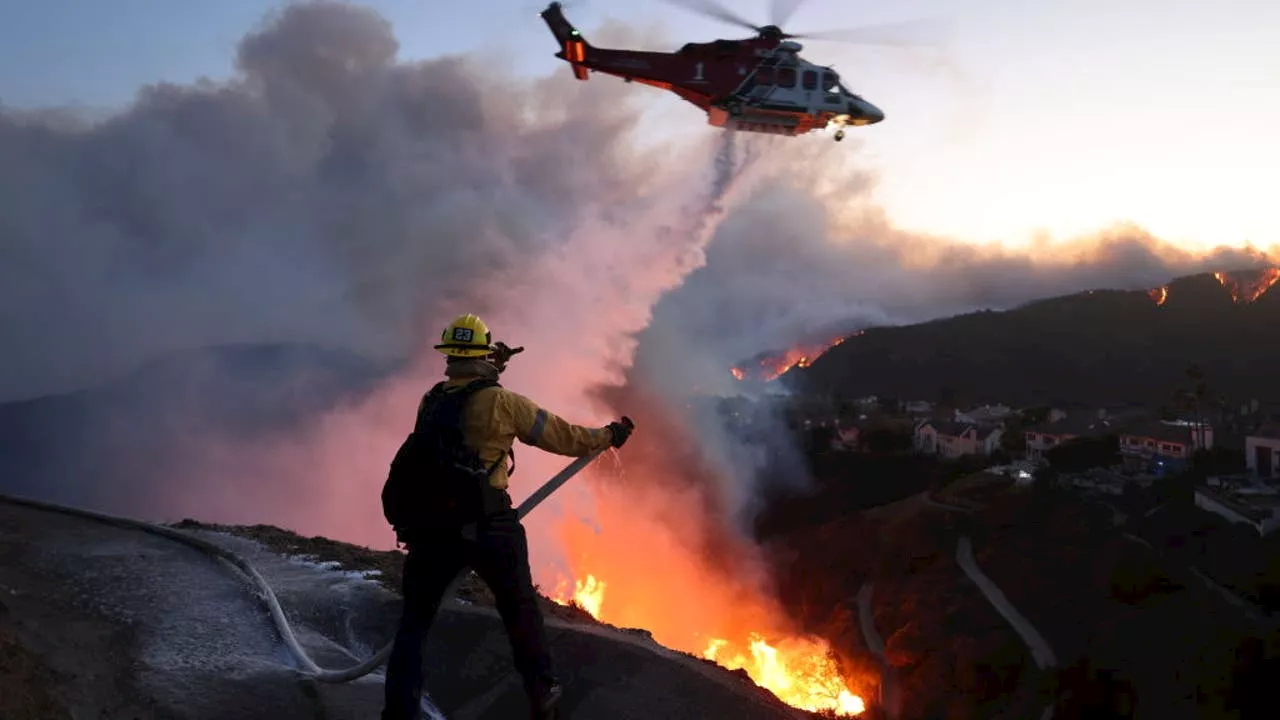Multiple deadly wildfires are ravaging Southern California, fueled by strong winds and dry conditions. These winter blazes are highly unusual and have forced over 100,000 residents to evacuate.
Southern California is facing multiple destructive wildfires, including the Palisades, Eaton, Hurst, and Woodley fires. These blazes have burned nearly 30,000 acres, displacing over 100,000 residents and causing widespread damage across the region. These winter wildfires, driven by strong winds and dry conditions, are atypical but have been exacerbated by a confluence of environmental and human factors.
The National Weather Service has characterized the windstorm fueling the flames as 'life-threatening,' with gusts exceeding 100 mph, making firefighting efforts extremely difficult. In response, Governor Gavin Newsom has declared a state of emergency, and President Joe Biden has approved federal disaster aid to assist ongoing firefighting operations. Fire crews are working relentlessly to protect lives and property as the fires continue to spread. Historical data from California wildfires since 1984 reveals that only four major fires have occurred during the winter months, with the majority of large-scale blazes igniting during summer. Prior to this year's Palisades and Eaton fires, the largest January wildfire in California history was the 2001 Viejas Fire, which consumed over 17 square miles. 'Winter wildfires should be an oxymoron,' Jennifer Balch, a fire scientist at the University of Colorado, stated to the AP. 'Temperatures drop, and we’re supposed to get precipitation.' Experts cited by the AP attribute these unprecedented wildfires to several converging factors: The combined effect, according to fire scientist Mike Flannigan of Thompson Rivers University in Canada, results in 'tiny, mighty, and fast' fires that are more challenging to contain. Unlike summer wildfires, which are larger but slower-moving, winter fires are often driven by extreme wind speeds that amplify the flames' reach. 'The impact increases exponentially as wind speed increases,' Flannigan explained to the AP. 'If firefighters can’t contain it within 10 to 15 minutes, it’s too late.
WILDFIRES CALIFORNIA WINTER NATURAL DISASTERS ENVIRONMENTAL FACTORS
United States Latest News, United States Headlines
Similar News:You can also read news stories similar to this one that we have collected from other news sources.
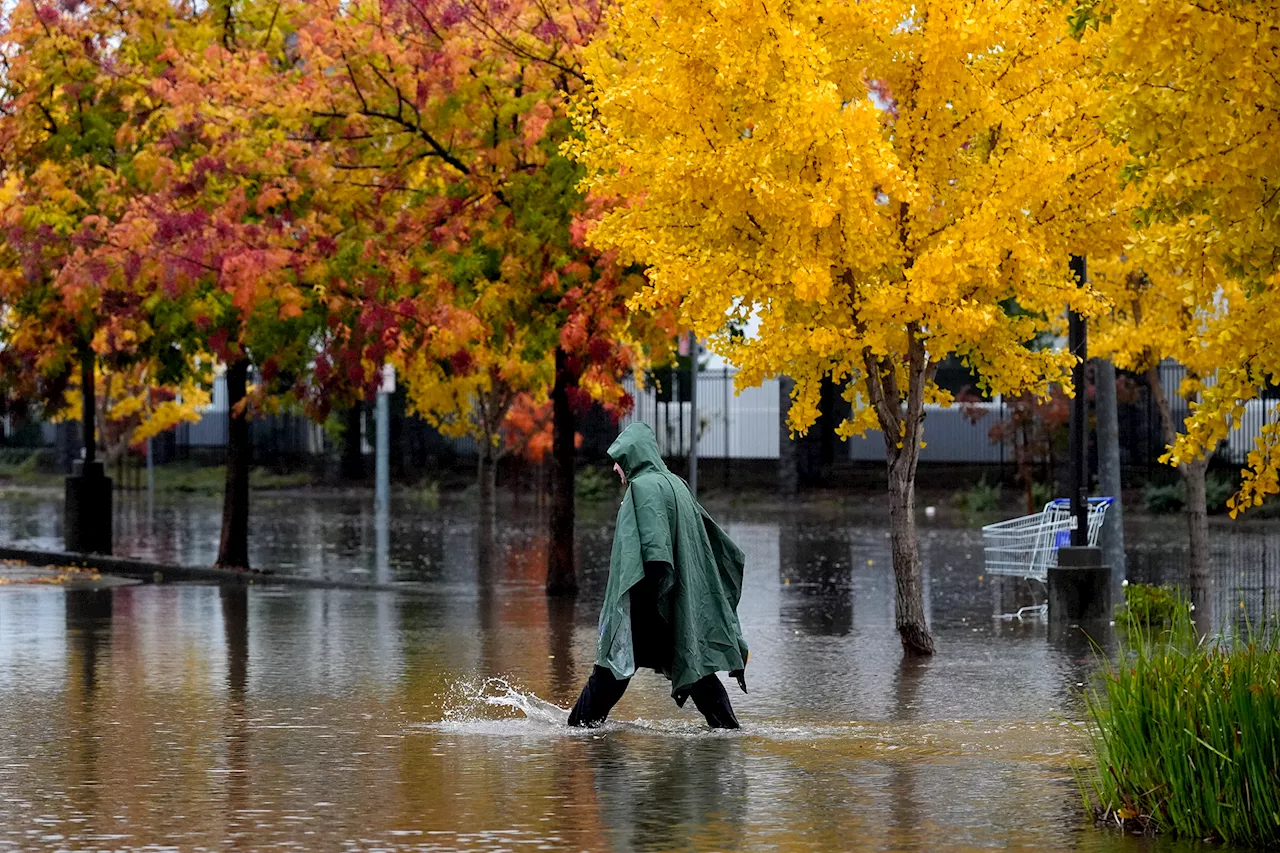 California's Unprecedented Weather Divide: Northern Rains, Southern DroughtCalifornia is experiencing an extreme weather divide, with Northern California drenched by record rainfall and Southern California enduring a severe drought. This unusual situation benefits the state's water supplies as the northern rains replenish major reservoirs.
California's Unprecedented Weather Divide: Northern Rains, Southern DroughtCalifornia is experiencing an extreme weather divide, with Northern California drenched by record rainfall and Southern California enduring a severe drought. This unusual situation benefits the state's water supplies as the northern rains replenish major reservoirs.
Read more »
 Unprecedented Wildfires Rage in Southern CaliforniaIntense wildfires fueled by powerful Santa Ana winds and drought conditions are causing widespread destruction in Los Angeles, burning through thousands of acres and threatening homes and cultural landmarks.
Unprecedented Wildfires Rage in Southern CaliforniaIntense wildfires fueled by powerful Santa Ana winds and drought conditions are causing widespread destruction in Los Angeles, burning through thousands of acres and threatening homes and cultural landmarks.
Read more »
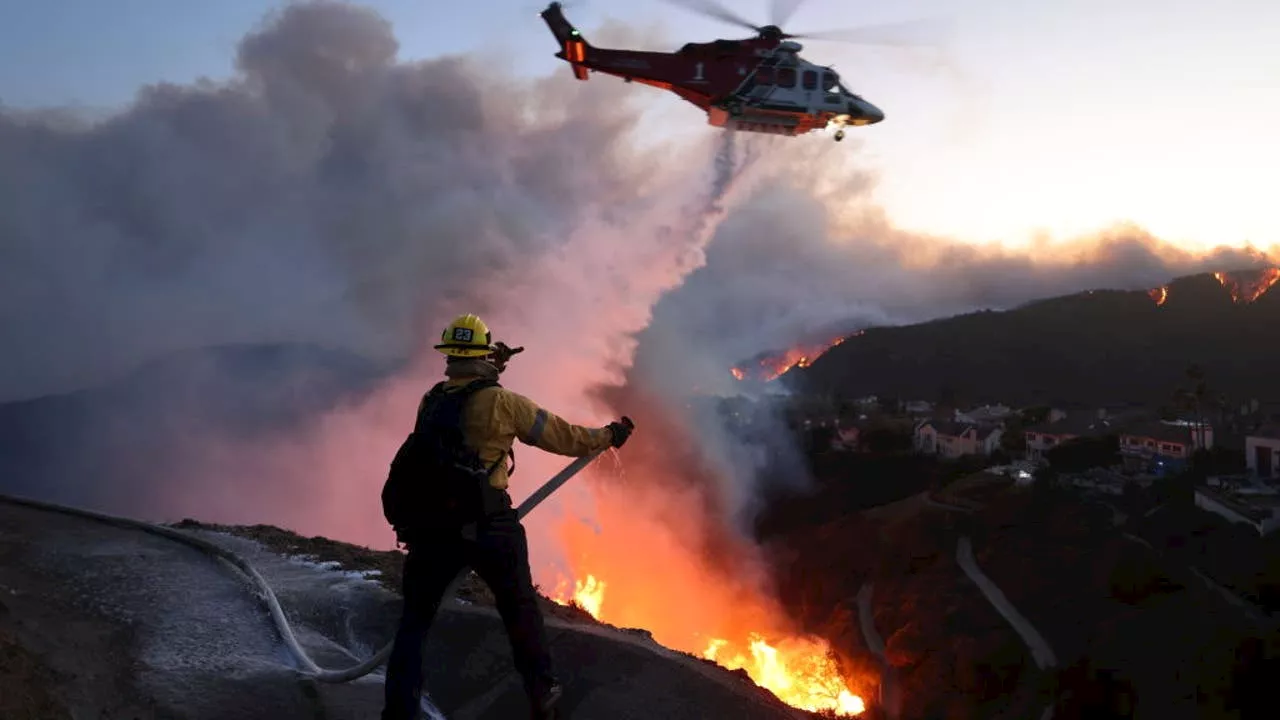 Southern California Ravaged by Unprecedented Winter WildfiresMultiple destructive wildfires fueled by extreme winds and dry conditions are burning across Southern California, displacing thousands and causing widespread devastation.
Southern California Ravaged by Unprecedented Winter WildfiresMultiple destructive wildfires fueled by extreme winds and dry conditions are burning across Southern California, displacing thousands and causing widespread devastation.
Read more »
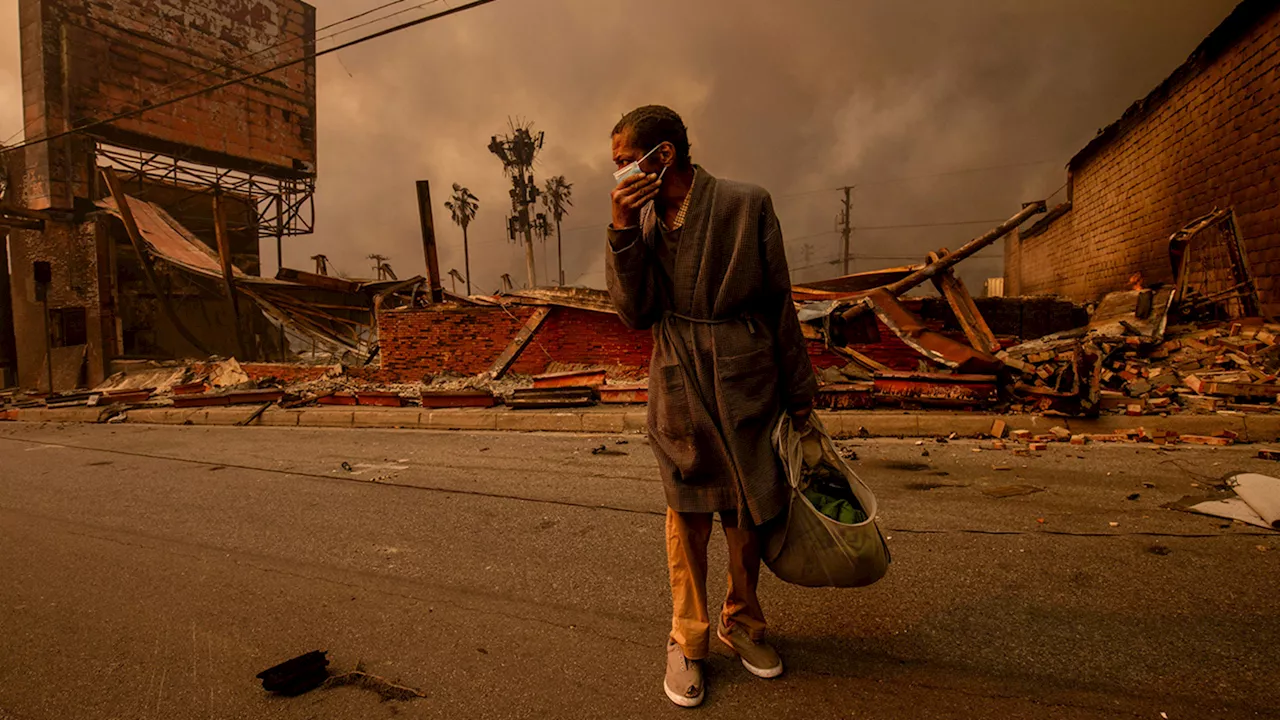 California Wildfires Ravage Southern CaliforniaA series of wildfires fueled by strong Santa Ana winds are wreaking havoc across Southern California, forcing mass evacuations and resulting in tragic loss of life.
California Wildfires Ravage Southern CaliforniaA series of wildfires fueled by strong Santa Ana winds are wreaking havoc across Southern California, forcing mass evacuations and resulting in tragic loss of life.
Read more »
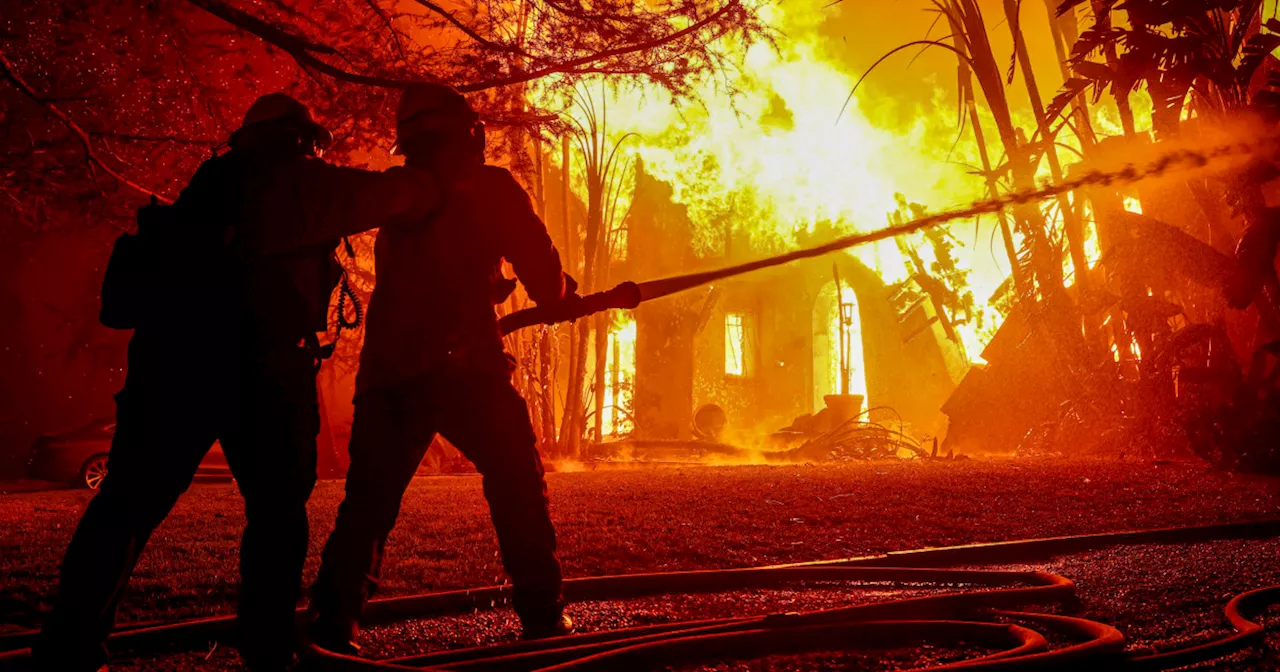 California Wildfires Ravage Southern CaliforniaThe California wildfires continue to rage, causing widespread devastation and forcing evacuations. The Eaton Fire has exploded to over 10,600 acres, while other fires burn across the region. The blazes have also impacted Hollywood's awards season, with events being delayed or canceled.
California Wildfires Ravage Southern CaliforniaThe California wildfires continue to rage, causing widespread devastation and forcing evacuations. The Eaton Fire has exploded to over 10,600 acres, while other fires burn across the region. The blazes have also impacted Hollywood's awards season, with events being delayed or canceled.
Read more »
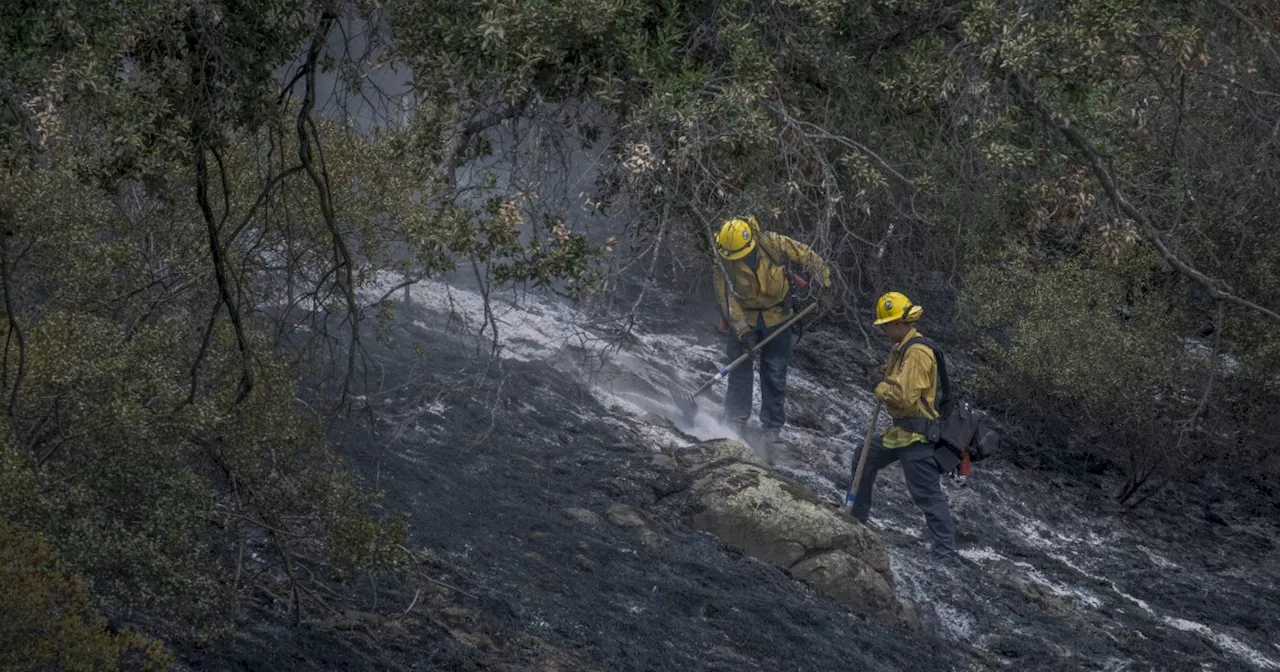 Northern California Fire Crews Assist in Drought-Stricken Southern CaliforniaSanta Ana winds and dry conditions have prompted the deployment of firefighting crews from Northern California to assist in Southern California counties. Fears of large wildfires are heightened as the region faces drought conditions.
Northern California Fire Crews Assist in Drought-Stricken Southern CaliforniaSanta Ana winds and dry conditions have prompted the deployment of firefighting crews from Northern California to assist in Southern California counties. Fears of large wildfires are heightened as the region faces drought conditions.
Read more »
